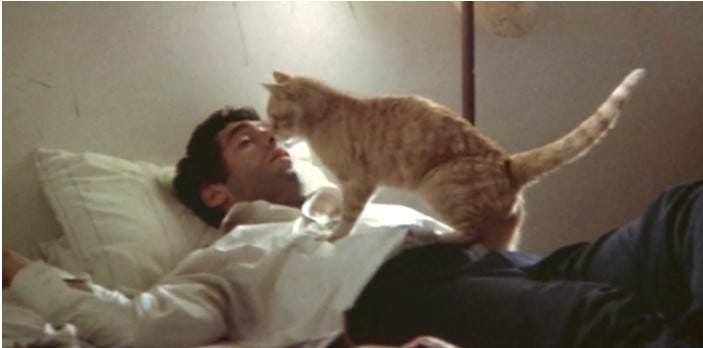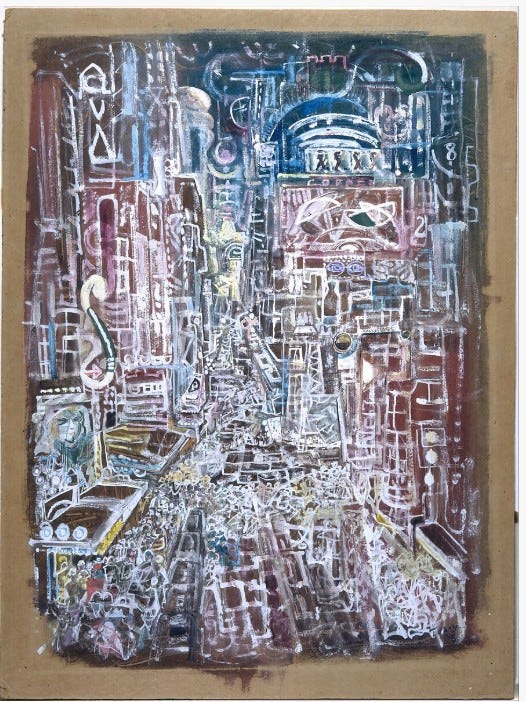Lies are good for all sorts of things: con games, gaslighting, money laundering, and more. Forgers and counterfeiters are lairs as are those who call you up and tell you a story designed to elicit your social security number or your banking information. Lies are bad, as even liars would agree, if asked, though they might add that we shouldn’t be too disapproving. After all, lies serve the higher good of benefiting them. And Pablo Picasso felt that a certain kind of lie benefits us all.
Talking with the art critic Marius de Zayas in 1923, Picasso said, “We all know that Art is not truth. Art is a lie that makes us realize truth, at least the truth that is given us to understand.” This idea of art and how it affects us is a distant cousin of the philosopher Donald Davidson’s argument that you cannot, by puzzling over a metaphor, figure out its meaning. Strictly speaking, metaphors have no intelligible meanings, no extractable content, for they are untrue. It is all very well for Robert Burns to say, “My love is a red, red rose,” but in truth his love is not a red, red, rose. According to Davidson, the point of saying such a thing is to jostle our routine ways of thinking and feeling and thereby prompt new thoughts and feelings. Granted, Burns “red, red rose” line has been quoted so often and for so long that it has become routine—lost its blush, so to speak. More recent metaphors are of course fresher.
The Tennis Court Oath, an early book by John Ashbery, contains a poem called “They Dream only of America.” Its first line is: “To be lost in the thirteen million pillars of grass.” What is Ashbery saying with this metaphorical image of what it is to be an American? From a logical or even a common-sense point of view, he is saying nothing. For there is no truth in the proposition that to dream of America is to aspire to be lost in its thirteen million pillars of grass. There is no such thing in which to be lost. Obviously, but just as obvious is the transformation that turns Walt Whitman’s Leaves of Grass into “pillars of grass.” But why “pillars” and why “thirteen million” of them?
Though there is no right answer to these questions, it occurs to me that Ashbery chose the word “million” to suggest an incalculably large number of pillars and “thirteen” to remind us of the thirteen smallish colonies that became an America so big that we inhabit it fully only in a waking dream of losing ourselves in it. America sets us adrift in an immensity that contains many things, including the eighteenth-century sensibility that produced our Constitution and a taste for the pediments and pillars of neoclassical architecture. This, anyway, is my interpretation of these images. It is neither right nor wrong, for poetry is neither true nor false. It has meanings, and it is up to you to decide if what I have said about the meanings in play at the outset of this poem is interesting, persuasive, illuminating, or not.
A poem is a fiction designed to activate our speculative powers, and we judge it good or bad according to the richness and coherence of the meanings it inspires us to discover—or invent, for poetry frees us to make whatever sense of it we can. Painting does the same. Writing in 1961 about a Mark Tobey retrospective, Ashbery said of one of the painter’s Broadway scenes that the lines rendering “a tangle of neon signs … somehow give the impression of the trajectories traced by the millions of lives in a great metropolis … This feeling of an infinity of people, atoms, and worlds, of endless spaces and incalculable lengths of time, is what gives Tobey’s work its strange poignancy.” Would Ashbery have seen infinity in this painting from the 1930s if he had not been familiar with the infinite Jackson Pollock evokes with his dripped and poured canvases? Maybe not, but so what? It’s perfectly legitimate to interpret Tobey’s painting by displacing a readymade reading from another artist’s work. Our interpretations are never correct or incorrect but, rather, interesting and engaging or dull and forgettable.
What Ashbery saw in Tobey’s painting was a way of seeing the world, of entering it by weaving its myriad parts into a dense web of meanings. To shift the metaphor: when paintings and poems succeed, they envelop us in an atmosphere of significance. Thus they put us in a mood or something deeper than a mood: a feeling that life is permeated by a certain quality to which we are hyper-attuned. To leap from Tobey’s luminous Broadway to Raymond Chander’s quietly sinister Los Angeles is to leave visionary exaltation for a weary sense of the darkness lurking in flat, relentless sunlight. I may be wrong, but I don’t think it ever rains in Chandler’s Los Angeles. Or in the movie Robert Altman made from the novelist’s best story, The Long Good-bye. It starred Elliott Gould, who changes the mood by infusing Chandler’s detective, Philip Marlowe, with antic despair. Though the darkness is as dark in the movie as it is in the novel, Gould gives it a dreadful glamor.
Lies are fictions offered as truths, and a carefully managed cluster of them also gives us a view of the world. See, for example, the latest conspiracy theory, whatever that may be. New ones pop up so often, each one promising to reveal the true meaning of everything. The point of these duplicitous fictions is of course to deceive, to manipulate, and when we recognize their duplicity we reject them. We reject the imaginary worlds they invite us to enter. But not everyone rejects them, and that renders large portions of the real world uncongenial to the point of uninhabitability.






" they envelop us in an atmosphere of significance." Wonderfully and certainly, this is so important to emphasize. Significance implies a wide band of values, psychic, humane, and metaphysical that are basic to our lives. As virtual culture, social chit-chat, gossip, sound-bites and mind-bites have percussed our broader and longer values, the perception of Significance itself has faded. Such items don't fit in TXT.
Even the mention of significant values often elicits "Oh, NO, I must focus ??"
It falls upon Poets, Writers, Philosophers, Artists, Composers to focus our practice on "Ultimate Things", as it has been expressed.
We all have become the "Lenders of Last Resort" to Culture itself.
In many ways, the critique of contemporary common culture by Pop Artists, like Lichtenstein, Warhol, Segal, Oldenburg, etc, can be viewed as not holding off the tide of insignificant pettiness. Making fun of our crapola culture didn't send a great enough alert; as example, we are still dulled by endless images of horror, despite poignant warnings by Warhol.
My own studio is dedicated to converting the fundamental processes of digital image making into a focus on humane values, ultimate things, contemplative appreciation of living by way of our new imaging processes themselves, thereby imploding those processes into wonders of essence.
Hundreds of Generations have been educated in Ultimate Values to Proximate Ones, rather than Trivial comments to Significant. Those ancient teachings did not result in perfect worlds, but they did provide a guide of measurement by which the silly and vulgar could be revealed readily by conscious people.
Thanks for the terrific insight into deceptions vs metaphors ! The former degrades while the later illuminates.
As Artists, we are challenged to learn from history and present significant values in our own time.